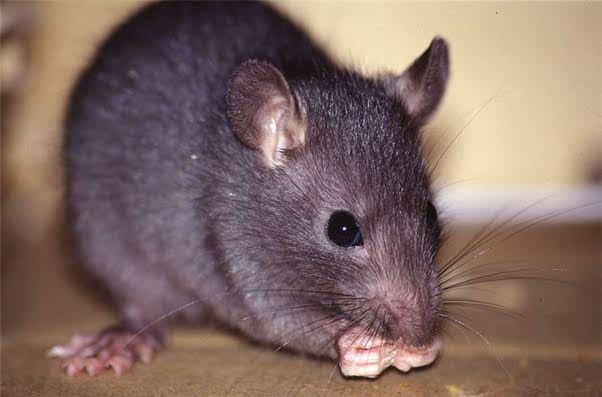Mice & Rats

Rats and mice are more than just a nuisance, they cause damage and carry diseases.
The three main rodent pests in Australia...
Norway rat: Rattus norvegicus - also known as brown rat, sewer rat and wharf rat. They have a stocky body. Adults weigh about half a kilo, they are a slightly larger animal than the roof rat. They makes burrows and are found wherever humans live. Their appearance is a blunt nose, small close set ears which do not reach the eyes when pulled down, semi-naked scaly tail which is shorter than the head and body combined, coarse fur brownish, reddish-gray or blackish on top eith a whitish-gray under belly.
Roof rat: Rattus rattus - also known as black rat and ship rat. Slender body with tail as long as body and head combined.
House mouse: Mus musculus or Mus domesticus.
They are small and slender, with a slightly pointed nose and black protruding eyes. They are large with scantily haired ears. They have nearly hairless tails with obvious scale rings. An adult is about 2/5 to 4/5 ounces, generally grayish-brown with a gray or buff belly, some are white-footed. Jumping mice have a white belly & Harvest mice have grooved upper incisor teeth.
Rats
There are currently over 60 described species of rats in Australia, and they occupy a wide range of the habitats across the country. The majority of these are native species; however two rats (Black Rat and Brown Rat) are introduced species that have rapidly adjusted to Australian conditions.
The widespread and abundant Black Rat (or Roof Rat, responsible for London's
Bubonic Plague in 1665), is a commensal rodent that is usually found in disturbed or degraded environments. It is the rat most commonly observed in cities and towns, and is often responsible for the infestation of houses, sheds, warehouses and storages.
Mice
Serious mouse infestations have occurred in grain-growing areas for more than a century. On average, serious mouse infestations occur about once every four to ten years and last up to two years. Infestations are common following exceptionally good cropping seasons.
Many other factors contribute to the occurrence of outbreaks:
- changes in farming practices and continuous cropping
- high yields leaving more feed available from harvesting losses
- crop irrigation and raised planting beds
- minimum tillage/direct seeding with reduced cultivation
- increase in stubble retention and reduced grazing
- larger holdings requiring faster and sometimes less complete harvesting rates

